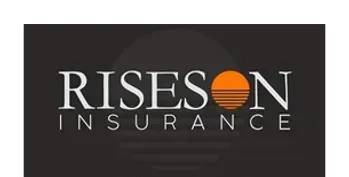
Actual Cash Value: What It Means for Your Car Insuranc
September 24, 2024 | Insurance
When it comes to insurance, one of the most crucial concepts to understand is "actual cash value" (ACV). Whether you're dealing with a homeowner's policy , an auto insurance claim, or any other type of coverage, understanding ACV can make a significant difference in how much you receive after a loss. So, what exactly is actual cash value, and why does it matter? Let's dive into it.
Actual cash value is a method used by insurance companies to determine the amount of compensation you’ll receive for a damaged or stolen item. In essence, ACV represents the value of the item at the time of loss, taking into account both its replacement cos t and its depreciation.
Formula for ACV:
ACV=Replacement Cost−Depreciation
Replacement Cost: The cost to replace the damaged or stolen item with a new one of similar kind and quality. Depreciation: The reduction in value of the item over time due to wear and tear, age, and other factors.
Imagine you have a five-year-old laptop that was damaged in a fire. If your laptop had a replacement cost of $1,000 when it was new, but it's now worth only $400 due to depreciation, your insurer would calculate the ACV as follows:
Replacement Cost:$1,000 Depreciation:$600 (value lost over five years)
So, the ACV would be $400. This is the amount you might receive from your insurer , not the full $1,000 it would cost to buy a new laptop.
Understanding ACV is essential because it affects how much you get paid out in a claim. Policies that use ACV can leave policyholders with less money than they might expect, especially for items that depreciate quickly. Here’s why ACV matters:
Compensation Differences: ACV often results in a lower payout compared to replacement cost policies, which cover the full cost to replace damaged items without accounting for depreciation. Budget Considerations: Knowing that ACV will be used can help you budget for potential shortfalls if you need to replace an item or repair damage. Policy Choice: When purchasing insurance, understanding whether your policy covers ACV or replacement cost can guide you in choosing the right coverage for your needs.
It's worth noting that many insurance policies offer an option for replacement cost coverage. This type of policy will cover the full cost to replace an item with a new one of similar kind and quality, without subtracting depreciation. While this type of coverage generally comes with higher premiums, it can be more beneficial in the event of a claim.
Review Your Policy: Always read the fine print of your insurance policy to understand whether it uses ACV or replacement cost coverage. Keep Records: Maintain detailed records of your belongings and their value. This can help in assessing the depreciation of items and ensuring you get fair compensation. Consider Upgrading: If you prefer not to deal with depreciation, consider policies that offer replacement cost coverage, especially for high-value items.
Actual cash value is a crucial aspect of understanding your insurance policy and how claims are handled. While it can seem a bit technical, being informed about how ACV works can help you make better decisions about your coverage and prepare for any potential claims. If you’re unsure about how ACV applies to your policy or if you need advice on coverage options, it’s always a good idea to speak with your insurance agent.
Understanding actual cash value helps ensure you’re not left in a financial lurch when you need it the most. Knowledge is power, especially when it comes to protecting your valuable assets.
At Riseson Insurance located in Tempe we can help you understand ACV in your insurance policy,
What is Actual Cash Value?
How Actual Cash Value Works
Why Does ACV Matter?
Replacement Cost vs. Actual Cash Value
Tips for Managing ACV in Your Policy
Final Thoughts
- Replacement Cost: The cost to replace the damaged or stolen item with a new one of similar kind and quality.
- Depreciation: The reduction in value of the item over time due to wear and tear, age, and other factors.
- Replacement Cost:$1,000
- Depreciation:$600 (value lost over five years)
- Compensation Differences: ACV often results in a lower payout compared to replacement cost policies, which cover the full cost to replace damaged items without accounting for depreciation.
- Budget Considerations: Knowing that ACV will be used can help you budget for potential shortfalls if you need to replace an item or repair damage.
- Policy Choice: When purchasing insurance, understanding whether your policy covers ACV or replacement cost can guide you in choosing the right coverage for your needs.
- Review Your Policy: Always read the fine print of your insurance policy to understand whether it uses ACV or replacement cost coverage.
- Keep Records: Maintain detailed records of your belongings and their value. This can help in assessing the depreciation of items and ensuring you get fair compensation.
- Consider Upgrading: If you prefer not to deal with depreciation, consider policies that offer replacement cost coverage, especially for high-value items.
